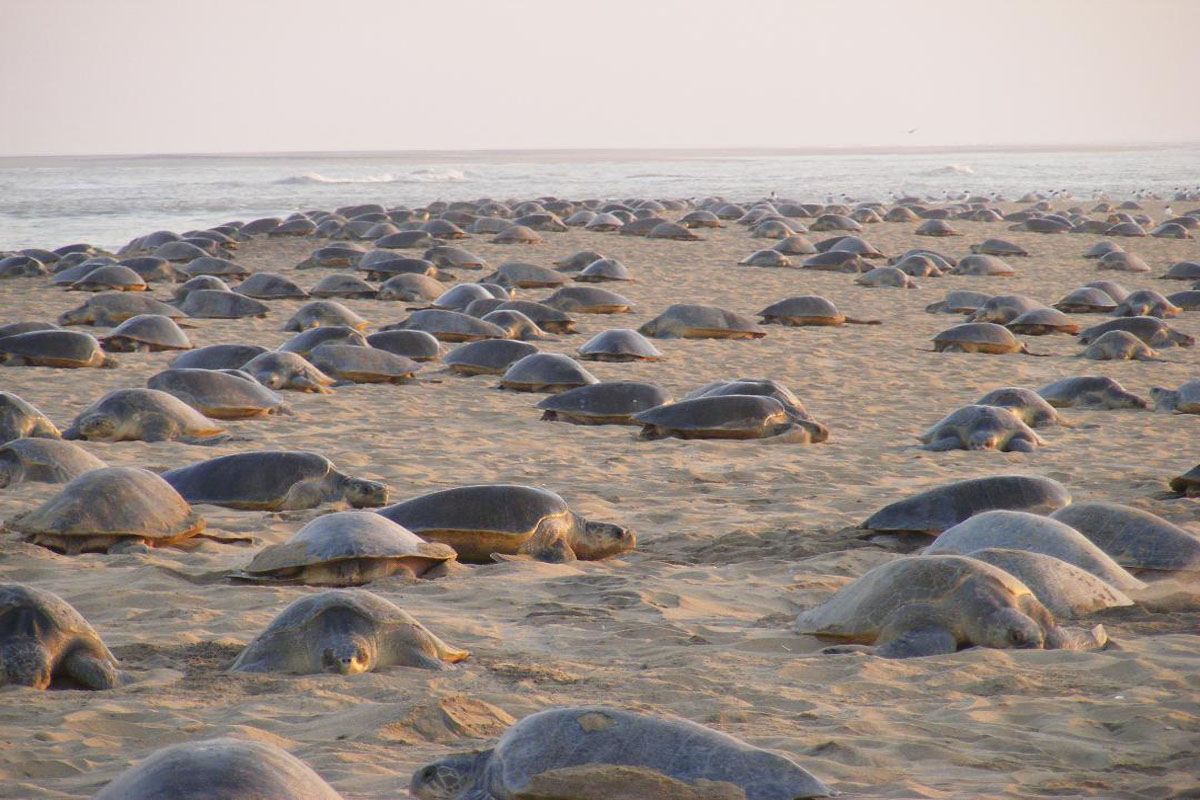Boita Bandana: Odisha celebrates its maritime legacy
Boita Bandana celebrates Odisha's maritime heritage with miniature boats, cultural events, and a tribute to the sea god Varuna.
An Olive Ridley usually lays about 120 to 150 eggs from which hatchlings emerge after about 45 to 50 days.

Photo: SNS
The coastal State has contributed significantly towards preservation and growth of this endangered Olive ridley sea turtle with the model adopted by the government for conservation of these marine species highly praised internationally, experts of Wildlife Institute of India said here on Tuesday while participating in a high power committee meeting in virtual platform.
The departments of forest and environment, fisheries and animal resource development, police, marine police, coast guard and port authorities in Odisha coast will have to work in cohesion at the ground level in conservation and nurturing of the Olive Ridley as a precious treasure of the nature, Chief Secretary Suresh Chandra Mahapatra, who presided over the meeting, said.
“As we have earned more experience and the State is investing large amounts of money for the purpose, we must deliver best in saving this species for the world community”, he said.
Advertisement
The Coast Guard has been requested to have real-time intelligence sharing with the departments about any illegal fishing. The institutions like DRDO, Dhamra Port, Gopalpur Port and Paradip port authorities have also been requested to extend cooperation to follow the black-out practices and light deeming to save turtles from possible delusion. The port authorities have also been asked to provide necessary support for joint patrolling in the sea and berthing of the vessels, he said.
Five forest divisions have been equipped with five high-speed boats, along with 13 trawlers and support boats for intercepting illegal fishing activities in the turtle habitation zones.
Last year around 3.5 lakh turtles had turned up at Gahirmatha nesting ground from 10 March to 24 March for mass nesting, a phenomenon otherwise described as arribada. Thirty-eight trawlers were seized and 202 crews were arrested for unlawful fishing activity.
A mobile app has been developed for the sea-going fishermen and the officers at the ground level. The fisherman can view the no0fishing zone in the app itself. They will also get an alert message when they enter the no-fishing area. The officers engaged in the conservation have been asked operation to download the app for asserting location of the fishing boats.
Berthing places would be set up at Barunei, Gupti, Sasanapeta and Krushnapriyapur and Rajnagar for safe custody of the seized vessels. A total number of 66 patrolling campsites including 61 on-shores and 5 off-shore camps would be operate round the clock.
Each camp would be provided with VHF communication devices, mobile phones and required camping materials. There would be regular communication and intelligence sharing among the coast guard, patrolling ship, and various camps and marine police.
Armed police force would be deployed for patrolling and enforcement activities. Sporadic nesting activities of the turtles and their mortality would be monitored. Soon after mass nesting, the rookeries would be fenced to protect the nests and eggs. Patrolling along with watch and ward activities would be strengthened further.
The Gahirmatha rookery in Kendrapara district is widely acclaimed as the World’s largest beach of olive turtles. The Olive turtles turn up in millions for mass nesting along the Odisha coast every year anytime between February to March. Apart from Gahirmatha, these threatened aquatic animals turn up at Rushikulya river mouth and Devi river mouth for mass nesting.
An Olive Ridley usually lays about 120 to 150 eggs from which hatchlings emerge after about 45 to 50 days.
Advertisement